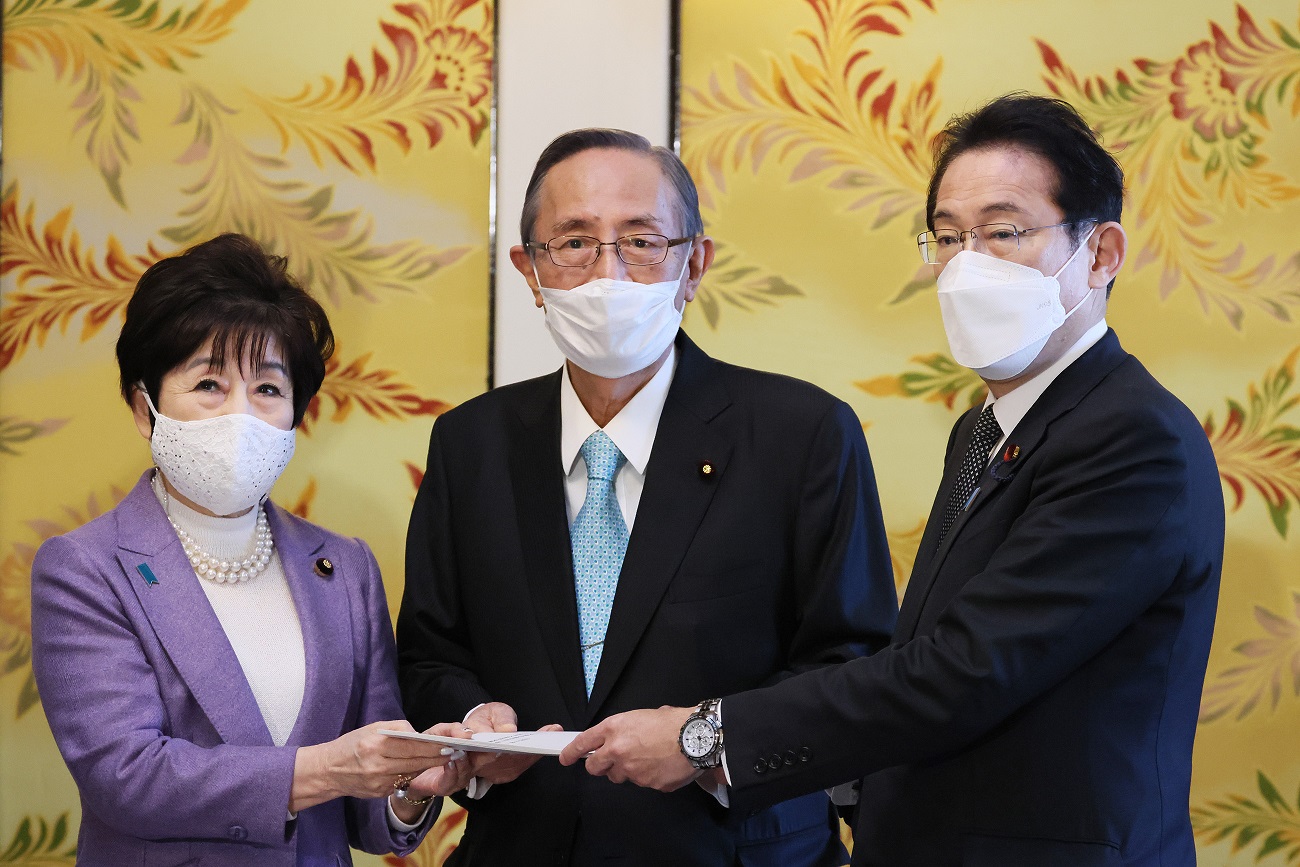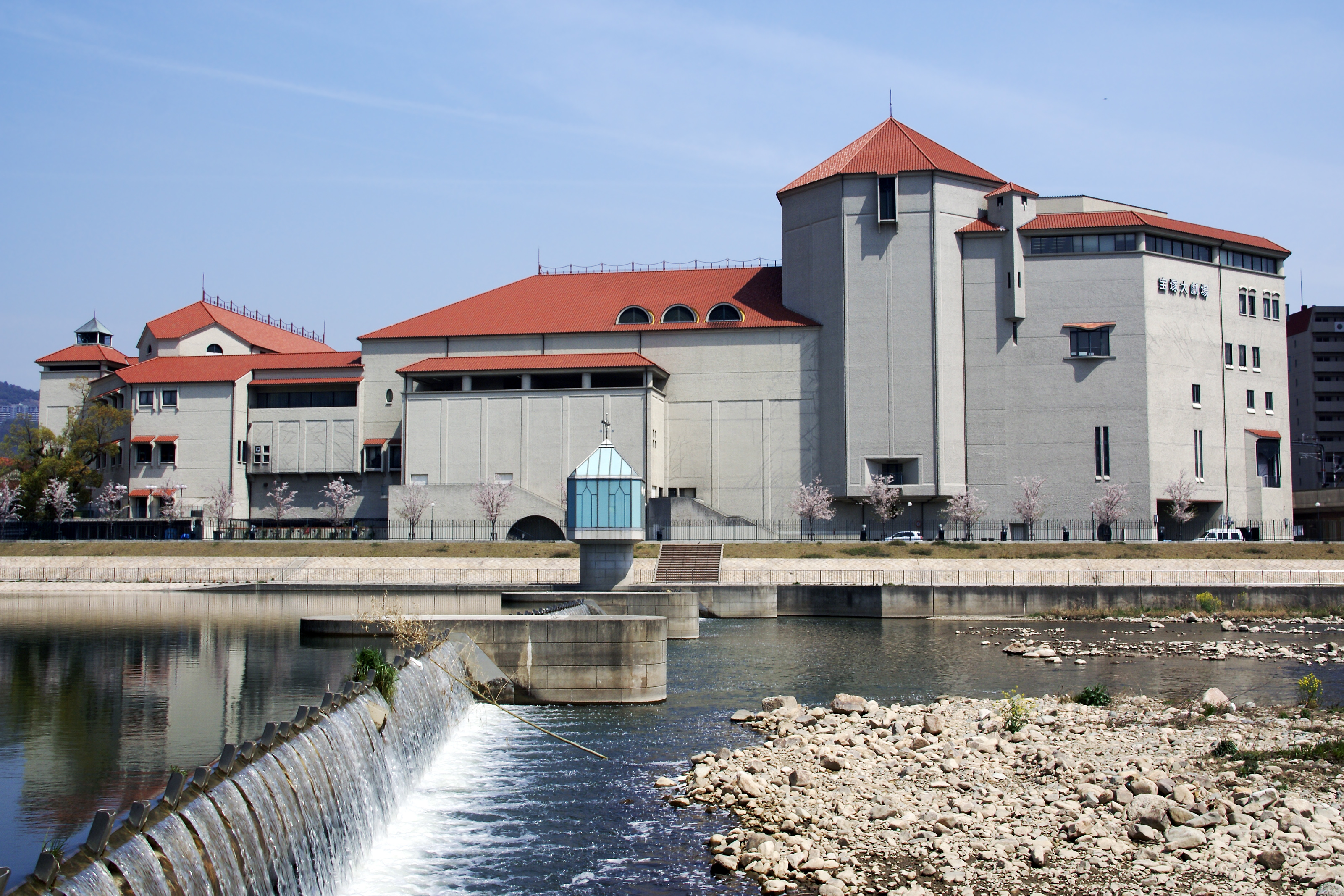|
Chikage Ogi
, real name (born 10 May 1933 as , is a Japanese actress and politician. During her 30-year-long political career, she served in some important posts. She became the first female President of the House of Councillors in 2004. Her pseudonymous surname is also spelled Ogi, Ōgi and Ohgi for a variety of Hepburn romanization systems. She herself uses Oogi. Early life Oogi was born and brought up in Kobe, Hyogo. She survived the Kobe Air Raid at age 11. She wrote later that her experience of the air raid had convinced her to make efforts to attain peace and national defense.Chikage Oogi, ''Dekiru Koto Deki nai Koto'', Sekaibunkasha, Stage career Oogi graduated from Takarazuka Music School and joined the Takarazuka Revue in April 1954. Her first movie appearance was in October of that year. She retired from the revue in 1958 and married Kotaro Hayashi, a kabuki actor later known as Tojuro Sakata. Oogi had been a full-time homemaker for a year until she returned to work in ... [...More Info...] [...Related Items...] OR: [Wikipedia] [Google] [Baidu] |
President Of The House Of Councillors
The is the presiding officer of the House of Councillors of Japan, and together with the Speaker of the House of Representatives, the President is also the head of the legislative branch of Japan. The President is elected by members of the House at the start of each session, and can serve two three-year terms, for a maximum of six years. The current President of the House of Councillors is Hidehisa Otsuji, who took office on 3 August 2022. Selection The election of the President takes place on the day of the new session, under the moderation of the Secretary-General of the House. The President is elected by an anonymous vote, and must have at least half of the votes in order to take office. If no one gets over half of the votes, the top two candidates will be voted again, and if they get the same number of votes, the President is elected by a lottery. The Vice President is elected separately, in the same way. Usually, the President is a senior member of the ruling party, an ... [...More Info...] [...Related Items...] OR: [Wikipedia] [Google] [Baidu] |
Kobe, Hyogo
Kobe ( , ; officially , ) is the capital city of Hyōgo Prefecture Japan. With a population around 1.5 million, Kobe is Japan's List of Japanese cities by population, seventh-largest city and the third-largest port city after Port of Tokyo, Tokyo and Port of Yokohama, Yokohama. It is located in Kansai region, which makes up the southern side of the main island of Honshu, Honshū, on the north shore of Osaka Bay. It is part of the Keihanshin metropolitan area along with Osaka and Kyoto. The Kobe city centre is located about west of Osaka and southwest of Kyoto. The earliest written records regarding the region come from the ''Nihon Shoki'', which describes the founding of the Ikuta Shrine by Empress Jingū in AD 201.Ikuta Shrine official website – "History of Ikuta Shrine" (Japanese) [...More Info...] [...Related Items...] OR: [Wikipedia] [Google] [Baidu] |
Hatsukoi Waltz
is a Japanese word which literally means "first love". It may refer to: Books *''Hatsukoi Gentei'', the Japanese title of ''First Love Limited'', a 2007-2008 manga series by Mizuki Kawashita *''Hatsukoi Scandal'', a 1981-1986 manga series by Akira Oze *''Hatsukoi Shimai'', the Japanese title of ''First Love Sisters'', a 2003-2008 manga series by Mako Komao Film and TV *''Hatsukoi'', 1926 Japanese film, directed by Heinosuke Gosho *''Hatsukoi'', 1939 Japanese film, directed by Tomoyoshi Murayama *'' Hatsukoi Jigokuhen'', a 1968 film directed by Susumu Hani *''Hatsukoi'', 1975 Japanese film, with Akiko Nishina Turgenev *''Hatsukoi'', 2000 Japanese film, with Rena Tanaka *''Hatsukoi'', 2006 Japanese film, with Aoi Miyazaki based on novel by :ja:中原みすず *''Hatsukoi'', 初恋 夏の記憶 2009 Japanese film Hanako (actress) Turgenev *''Hatsukoi'', (はつ恋), 2012 NHK drama series, with Yoshino Kimura *'' Hatsukoi (初恋),'' 2019 film directed by Takashi Miike Music * '' ... [...More Info...] [...Related Items...] OR: [Wikipedia] [Google] [Baidu] |
Onna No Gakkō
Onna is a Local Government Area in Akwa Ibom State, Akwa Ibom State, Nigeria. Its name comes from an acronym of the names of the four predominant clans in the area: Oniong, Nnung Ndem, Awa Afaha and Awa. Onna has a population of about 495,000 people worldwide. Onna is bounded by the east by Ibeno, west by mpat enin and eastern Obolo and south by the Atlantic ocean. Because of its proximity to the Atlantic Ocean, the people of Onna are predominantly fishermen and farmers. Onna is one of the host to exon Mobil Nigeria, oil exploration is ongoing in communities such as Ukpana, Akpabom, Ikot Abasi, Ikwe etc. Onna play host to the Utapette, Atabrikang and Ibioto oil fields The oil rich local government is also home to a number of highly intellectual population who have made numerous impact in the community, nationwide and in the diasporas. Villages in Onna *Ikwe *Ikot Akpatek *Ikot Ebidang *Ikot Ebekpo *Abat *Ndon Eyo *Mkpok *Okat *Ikot Edor *Ukpana *Mkpaeto *Ikot Esor *Ikot Iko I ... [...More Info...] [...Related Items...] OR: [Wikipedia] [Google] [Baidu] |
Yoshiko Ōtaka
was a Japanese singer, actress, journalist, and politician. Born in China, she made an international career in film in China, Hong Kong, Japan and the United States. Early in her career, the Manchukuo Film Association concealed her Japanese origin and she went by the Chinese name Li Hsiang-lan (), rendered in Japanese as Ri Kōran. This allowed her to represent China in Japanese propaganda movies. After the war, she appeared in Japanese movies under her real name, as well as in several English language movies under the stage name, Shirley Yamaguchi. After becoming a journalist in the 1950s under the name , she was elected as a member of the Japanese parliament in 1974, and served for 18 years. After retiring from politics, she served as vice president of the Asian Women's Fund. Early life She was born on February 12th, 1920 to Japanese parents, and , who were then settlers in Fushun, Manchuria, Republic of China, in a coal mining residential area in Dengta, Liaoyang. Fumio ... [...More Info...] [...Related Items...] OR: [Wikipedia] [Google] [Baidu] |
Sanji No Anata
Sanji may refer to: * Changji or Sanji, city in Xinjiang, China * Sanji, Fujian, village in Nanping, Fujian, China * Sanji (director), Sanji Senaka, an American music video director * Sanji (given name), a masculine Japanese given name * Sanji (One Piece) , also known as , is a fictional character in the ''One Piece'' franchise created by Eiichiro Oda. A native to the North Blue, Sanji grew up as part of the Vinsmoke family under his father Vinsmoke Judge, king of the Germa Kingdom, and mother Vi ..., fictional character in the ''One Piece'' manga and anime series See also * Senji (other) {{disambiguation ... [...More Info...] [...Related Items...] OR: [Wikipedia] [Google] [Baidu] |
Homemaker
Homemaking is mainly an American and Canadian term for the management of a home, otherwise known as housework, housekeeping, housewifery or household management. It is the act of overseeing the organizational, day-to-day operations of a house or estate, and the managing of other domestic concerns. A person in charge of the homemaking, who is not employed outside the home, in the US and Canada, is called a homemaker, a term for a housewife or a househusband. Historically the role of homemaker was often assumed by women. The term "homemaker", however, may also refer to a social worker who manages a household during the incapacity of the housewife or househusband. Home health workers assume the role of homemakers when caring for elderly individuals. This includes preparing meals, giving baths, and any duties the person in need cannot perform for themselves. Homemaking can be the full-time responsibility of one parent, shared with children or extended family, or shared or traded ... [...More Info...] [...Related Items...] OR: [Wikipedia] [Google] [Baidu] |
Kabuki
is a classical form of Japanese dance-drama. Kabuki theatre is known for its heavily-stylised performances, the often-glamorous costumes worn by performers, and for the elaborate make-up worn by some of its performers. Kabuki is thought to have originated in the very early Edo period, when founder Izumo no Okuni formed a female dance troupe who performed dances and light sketches in Kyoto. The art form later developed into its present all-male theatrical form after women were banned from performing in kabuki theatre in 1629. Kabuki developed throughout the late 17th century and reached its zenith in the mid-18th century. In 2005, kabuki theatre was proclaimed by UNESCO as an intangible heritage possessing outstanding universal value. In 2008, it was inscribed in the UNESCO Intangible Cultural Heritage Lists, UNESCO Representative List of the Intangible Cultural Heritage of Humanity. Etymology The individual kanji that make up the word ''kabuki'' can be read as , , and . ... [...More Info...] [...Related Items...] OR: [Wikipedia] [Google] [Baidu] |
Sakata Tōjūrō IV
was a Japanese kabuki actor in the Kamigata style and was officially designated a Living National Treasure. Unlike most kabuki actors, he performed both male and female roles, and was renowned as both a skilled ''wagotoshi'' (actor of male roles in the ''wagoto'' tradition) and ''onnagata'' (actor of female roles). He was the fourth in the line of Sakata Tōjūrō, having revived the name after a lapse of over 230 years. Lineage Though he bears no direct hereditary connection to the previous lineage of Sakata Tōjūrō which he has revived, Tōjūrō traced his line back several generations within the kabuki world. He is the eldest son of Nakamura Ganjirō II, grandson of Nakamura Ganjirō I, and great-grandson of Nakamura Kanjaku III who was adopted into the kabuki families by Nakamura Utaemon IV. Tōjūrō's sons Nakamura Ganjirō IV and Nakamura Senjaku III perform as kabuki actors, as do his grandsons Nakamura Kazutarō and Nakamura Toranosuke. Life and career He wa ... [...More Info...] [...Related Items...] OR: [Wikipedia] [Google] [Baidu] |
Takarazuka Revue
The is a Japanese all-female musical theatre troupe based in Takarazuka, Hyōgo Prefecture, Japan. Women play all roles in lavish, Broadway-style productions of Western-style musicals and stories adapted from films, novels, manga, and Japanese folktales. The Takarazuka Revue Company is a division of the Hankyu Railway company; all members of the troupe are employed by Hankyu. History The Takarazuka Revue was founded by Ichizō Kobayashi, an industrialist-turned-politician and president of Hankyu Railways, in Takarazuka, Japan in 1913. The city was the terminus of a Hankyu line from Osaka and already a popular tourist destination because of its hot springs. Kobayashi believed that it was the ideal spot to open an attraction of some kind that would boost train ticket sales and draw more business to Takarazuka. Since Western song and dance shows were becoming more popular and Kobayashi considered the kabuki theater to be old and elitist, he decided that an all-female theater ... [...More Info...] [...Related Items...] OR: [Wikipedia] [Google] [Baidu] |
Takarazuka Music School
Takarazuka Music School (宝塚音楽学校, ''Takarazuka Ongaku Gakkō'') is a private girls' school in Takarazuka, Hyōgo Prefecture, Japan. It is a Takarazuka Revue training school that is a miscellaneous vocational school approved by Hyōgo Prefecture according to the School Education Law. The school was established in 1913 by Ichizō Kobayashi, the founder of the Hankyu Railway and the Takarazuka Revue. The school is known for its strictness and unique set of rules that students must abide to both at school and during private life. During its over 100 years of history, it has produced over 4,500 performers for the Takarazuka stage. History Takarazuka Music School was established in July 1913 as ''Takarazuka Shōkatai'' (Takarazuka Chorus). In 1939, it was divided into the Takarazuka Revue and Takarazuka Music School. All Takarazuka Revue members have since been graduates of the Takarazuka Music School. Since 1989, all students have received basic training at the Ground S ... [...More Info...] [...Related Items...] OR: [Wikipedia] [Google] [Baidu] |





